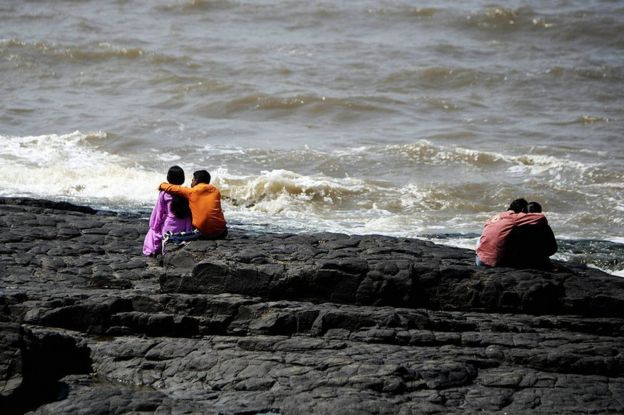#Quetta_Tragedy #National_Action_Plan #Pak_Army #CPEC
Quetta, the provincial capital of #Balochistan has been facing ghastly and grisly attack on its soil since 2006, supposedly after the killing of Baloch nationalist leader Akbar Bugti. Now it has started becoming the epicenter of the asymmetric proxy war in Pakistan. Is it happening due to China-led CPEC project? Is it symbolized a failure of National Action Plan? It is correct to say that Pakistan has been failed to provide adequate and sustainable economic incentives to Baloch people. Which is why, instead of having fueled by abundant natural resources and mineral deposits in Balochistan , it still has been counted as the poorest province of Pakistan, reeling under the electricity, gas and water crises. Unless the corruption is eliminated from Pakistan, it will not be set free from terrorism and other problems. I think that corruption is the biggest enemy of Pakistan. National Action Plan is failed in Balochistan, due to corruption, not military apparatus. In fact Pakistan has no model installation how to tackle terror menace. Here is :
The 20-point National Action Plan on counter-terrorism:
1. Implementation of death sentence of those convicted in cases of terrorism.
2. Special trial courts under the supervision of Army. The duration of these courts would be two years.
3. Militant outfits and armed gangs will not be allowed to operate in the country.
4. NACTA, the anti-terrorism institution will be strengthened.
5. Strict action against the literature, newspapers and magazines promoting hatred, decapitation, extremism, sectarianism and intolerance.
6. All funding sources of terrorists and terrorist outfits will be frozen.
7. The defunct outfits will not be allowed to operate under any other name.
8. Establishing and deploying a dedicated counter-terrorism force.
9. End to religious extremism and protection of minorities will be ensured.
10. Registration and regulation of religious seminaries.
11. Ban on glorification of terrorists and terrorist organisations through print and electronic media.
12. Administrative and development reforms in FATA with immediate focus on repatriation of IDPs.
13. Communication network of terrorists will be dismantled completely.
14. Concrete measures against promotion of terrorism through internet and
social media.
15. No room will be left for the extremism in any part of the country.
16. Ongoing operation in Karachi will be taken to its logical end.
17. Balochistan government to be fully empowered for political reconciliation with complete ownership by all stakeholders.
18. Action against elements spreading sectarianism.
19. Formulation of a comprehensive policy to deal with the issue of Afghan refugees, beginning with registration of all refugees.
20. Reforms in criminal courts system to strengthen the anti-terrorism institutions including provincial CIDs.
-Md Irshad Ayub
Quetta, the provincial capital of #Balochistan has been facing ghastly and grisly attack on its soil since 2006, supposedly after the killing of Baloch nationalist leader Akbar Bugti. Now it has started becoming the epicenter of the asymmetric proxy war in Pakistan. Is it happening due to China-led CPEC project? Is it symbolized a failure of National Action Plan? It is correct to say that Pakistan has been failed to provide adequate and sustainable economic incentives to Baloch people. Which is why, instead of having fueled by abundant natural resources and mineral deposits in Balochistan , it still has been counted as the poorest province of Pakistan, reeling under the electricity, gas and water crises. Unless the corruption is eliminated from Pakistan, it will not be set free from terrorism and other problems. I think that corruption is the biggest enemy of Pakistan. National Action Plan is failed in Balochistan, due to corruption, not military apparatus. In fact Pakistan has no model installation how to tackle terror menace. Here is :
The 20-point National Action Plan on counter-terrorism:
1. Implementation of death sentence of those convicted in cases of terrorism.
2. Special trial courts under the supervision of Army. The duration of these courts would be two years.
3. Militant outfits and armed gangs will not be allowed to operate in the country.
4. NACTA, the anti-terrorism institution will be strengthened.
5. Strict action against the literature, newspapers and magazines promoting hatred, decapitation, extremism, sectarianism and intolerance.
6. All funding sources of terrorists and terrorist outfits will be frozen.
7. The defunct outfits will not be allowed to operate under any other name.
8. Establishing and deploying a dedicated counter-terrorism force.
9. End to religious extremism and protection of minorities will be ensured.
10. Registration and regulation of religious seminaries.
11. Ban on glorification of terrorists and terrorist organisations through print and electronic media.
12. Administrative and development reforms in FATA with immediate focus on repatriation of IDPs.
13. Communication network of terrorists will be dismantled completely.
14. Concrete measures against promotion of terrorism through internet and
social media.
15. No room will be left for the extremism in any part of the country.
16. Ongoing operation in Karachi will be taken to its logical end.
17. Balochistan government to be fully empowered for political reconciliation with complete ownership by all stakeholders.
18. Action against elements spreading sectarianism.
19. Formulation of a comprehensive policy to deal with the issue of Afghan refugees, beginning with registration of all refugees.
20. Reforms in criminal courts system to strengthen the anti-terrorism institutions including provincial CIDs.
-Md Irshad Ayub




